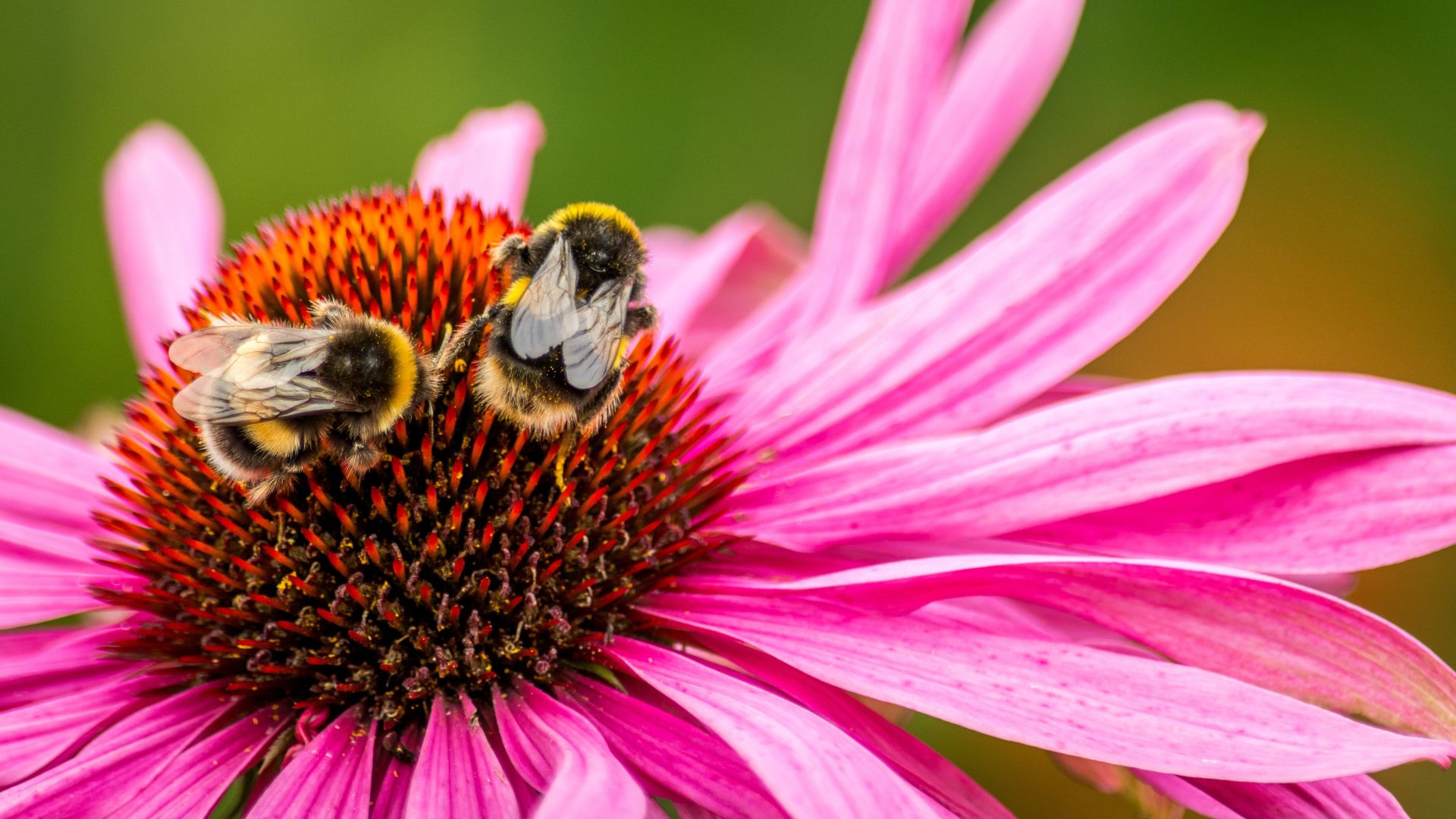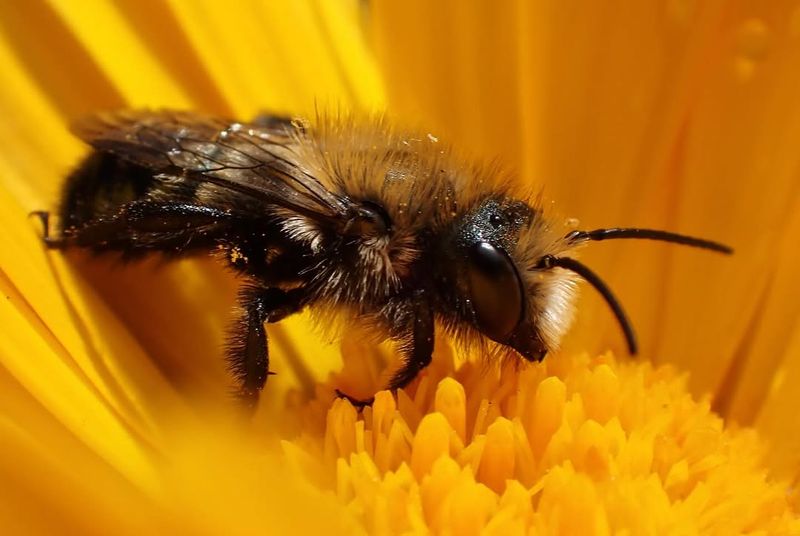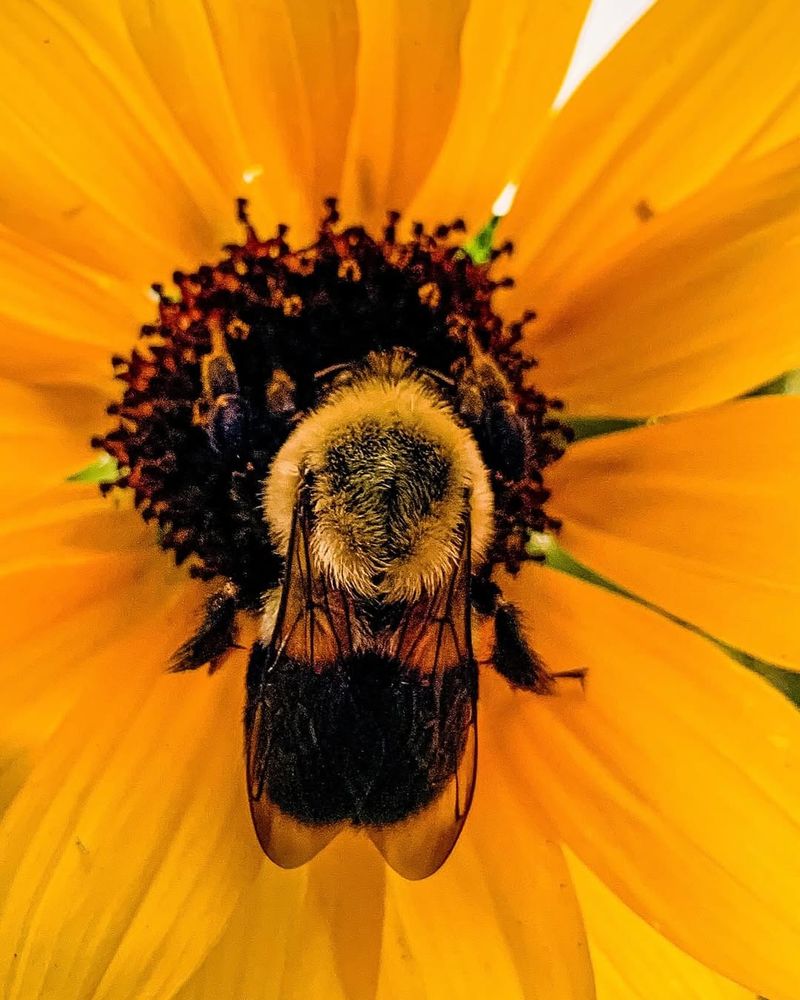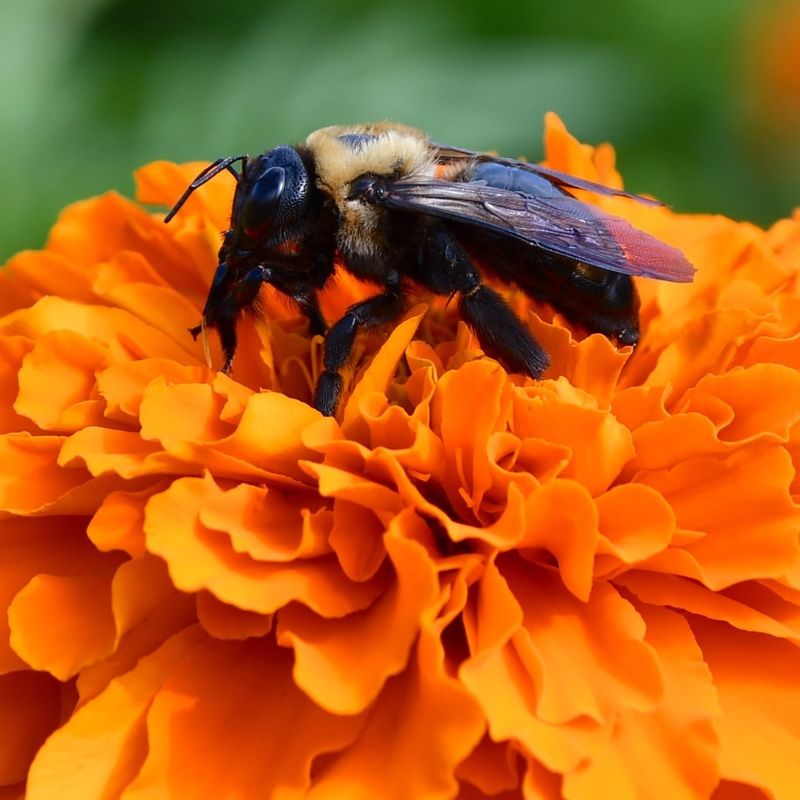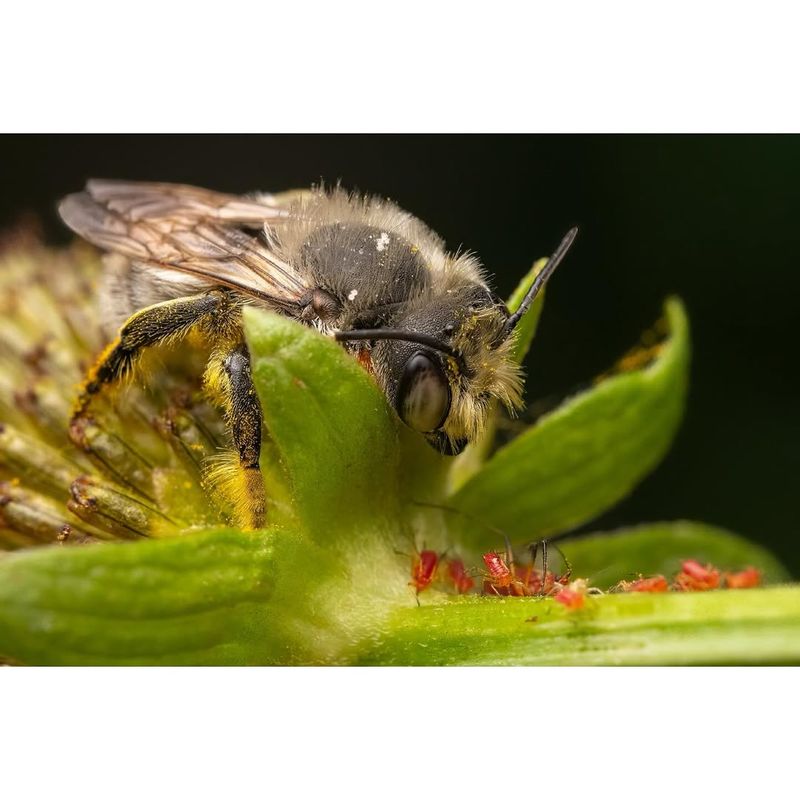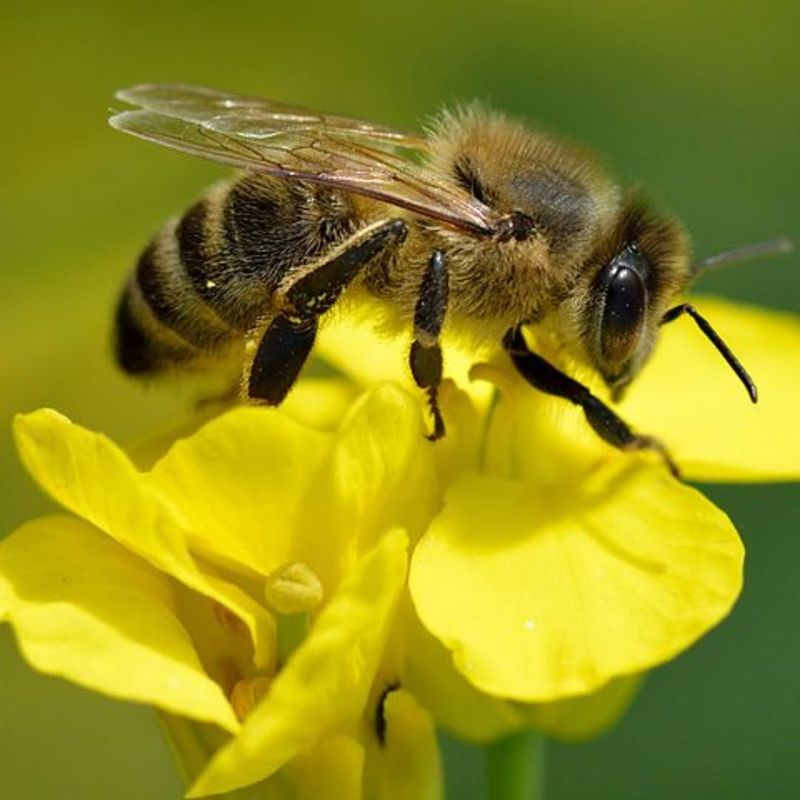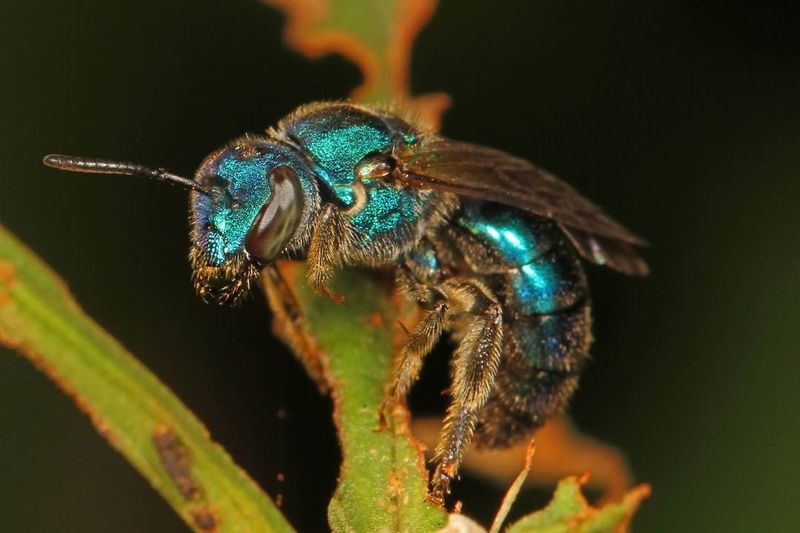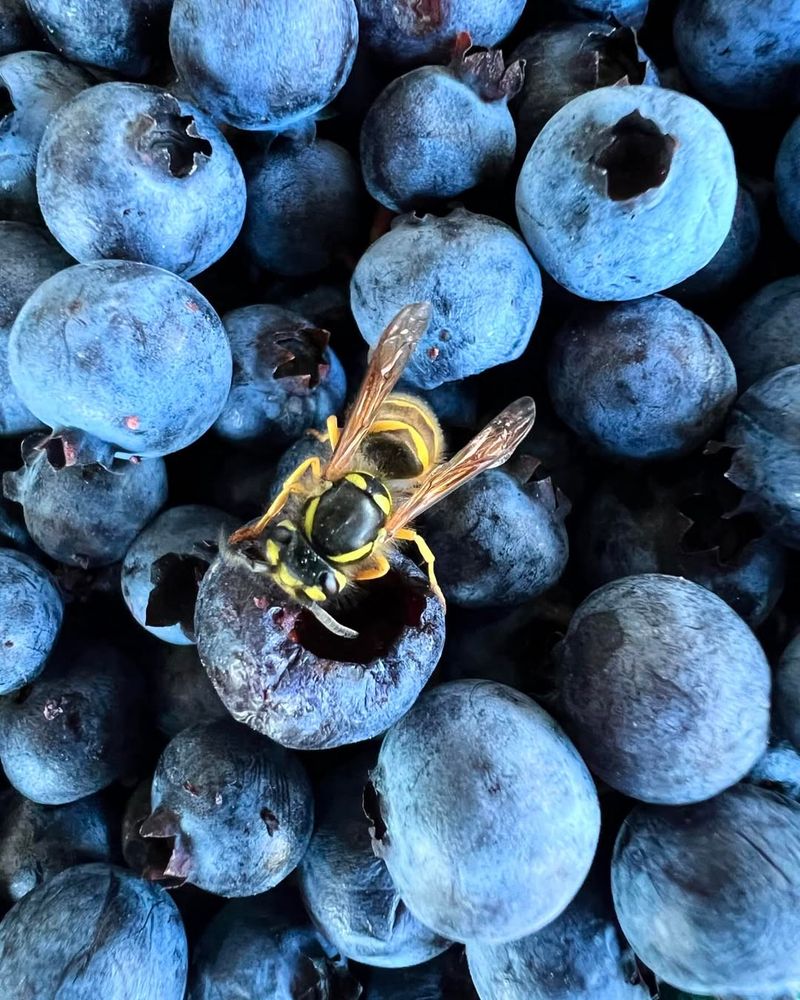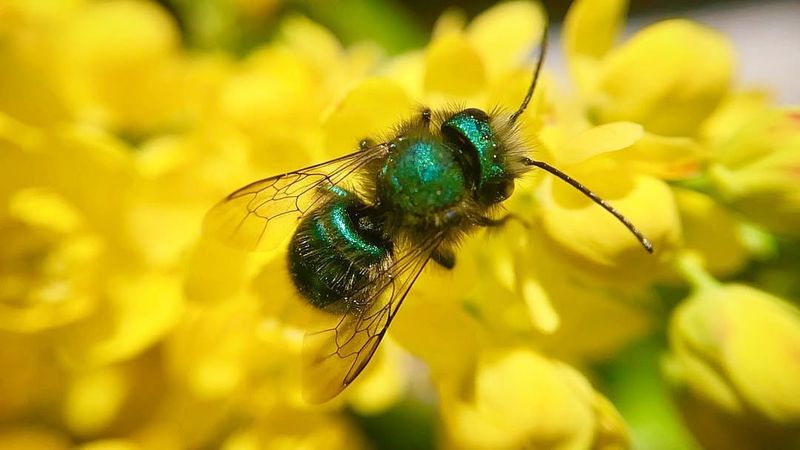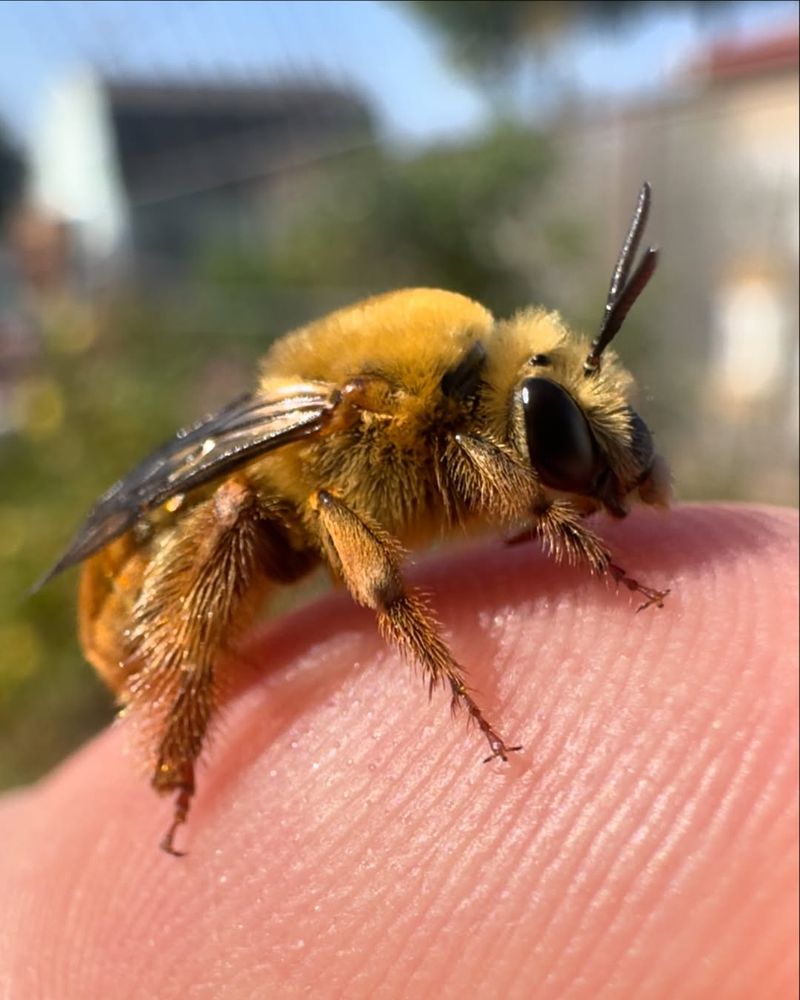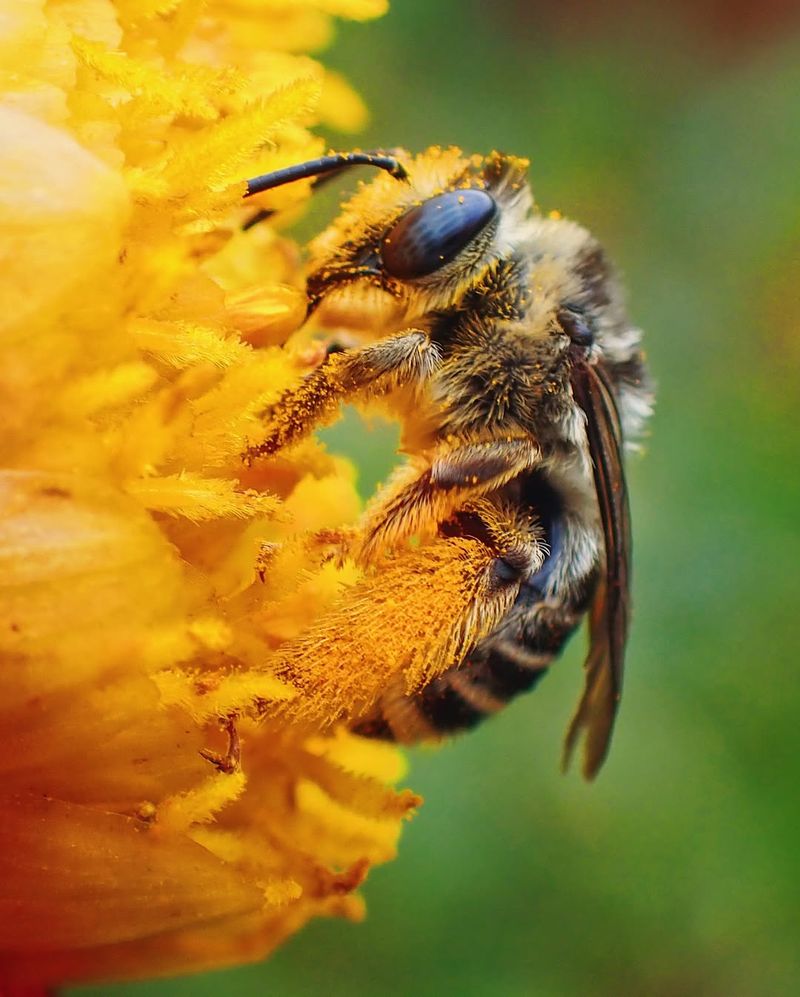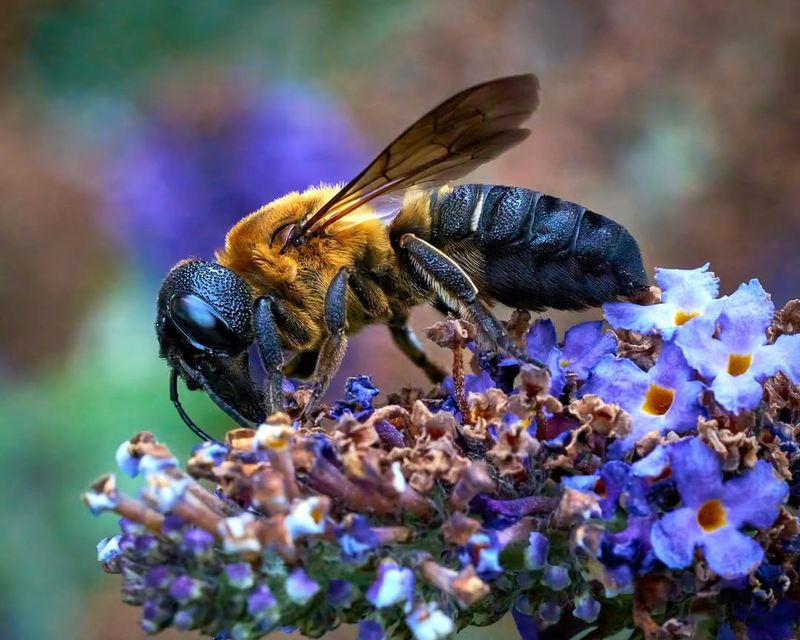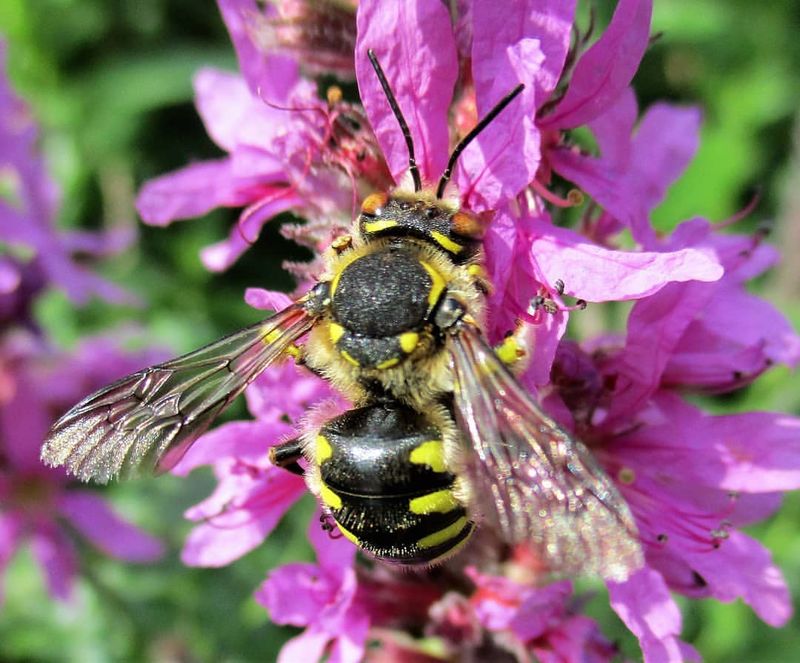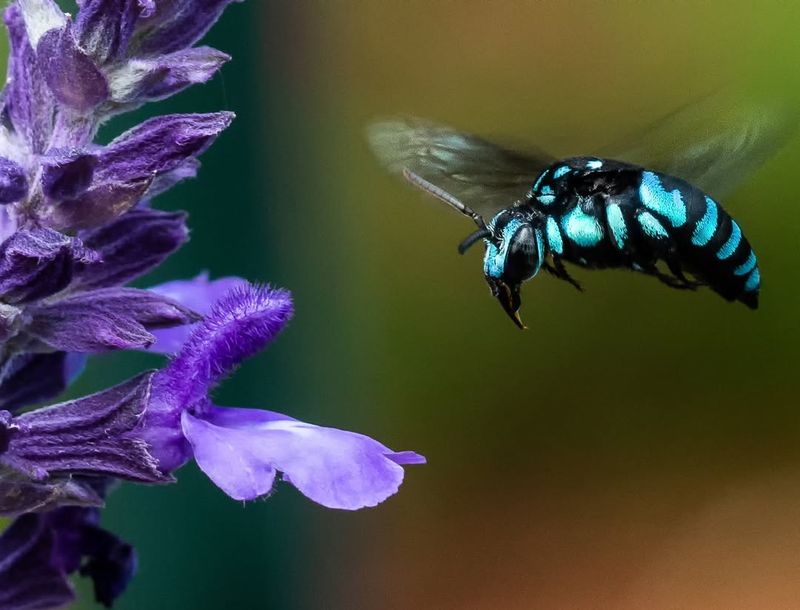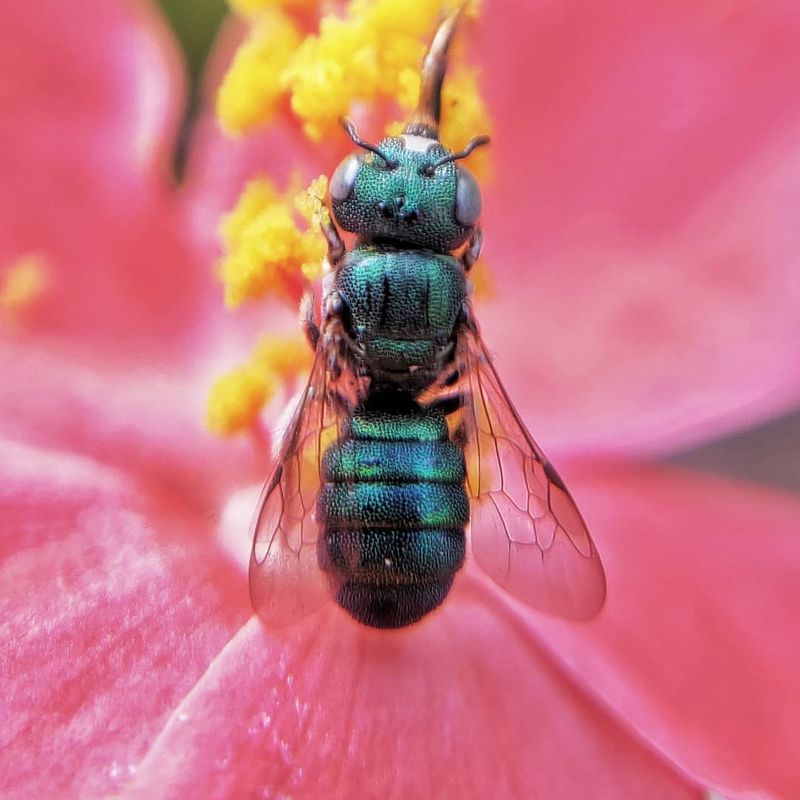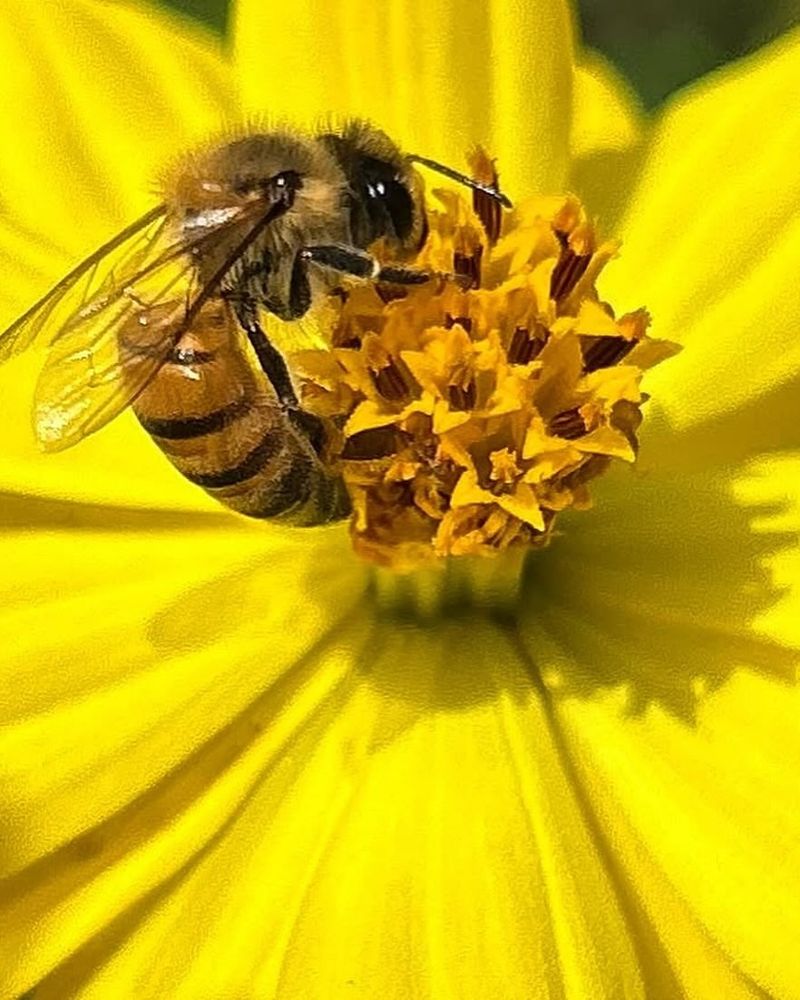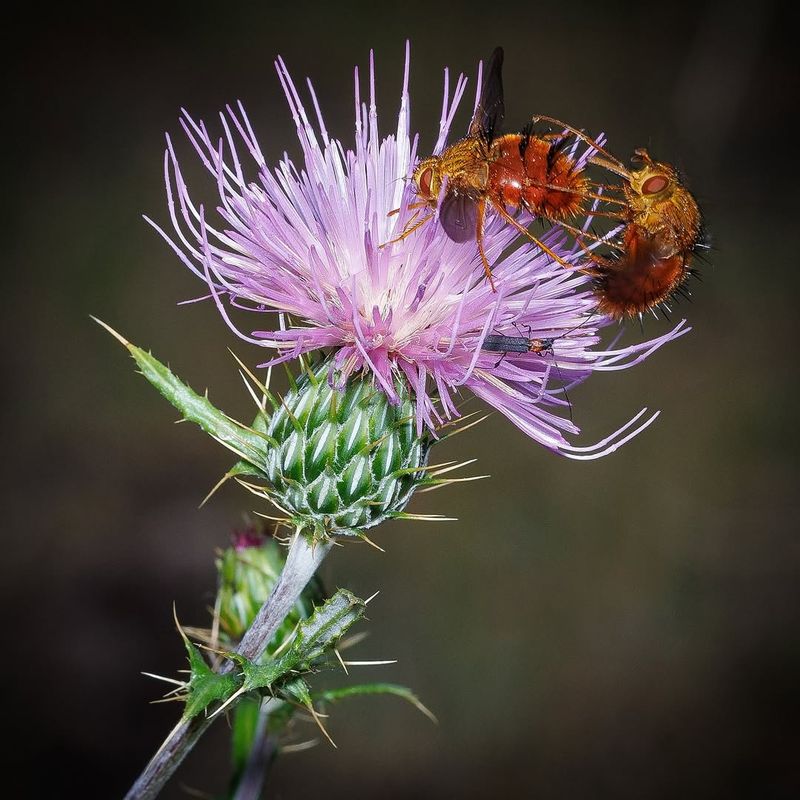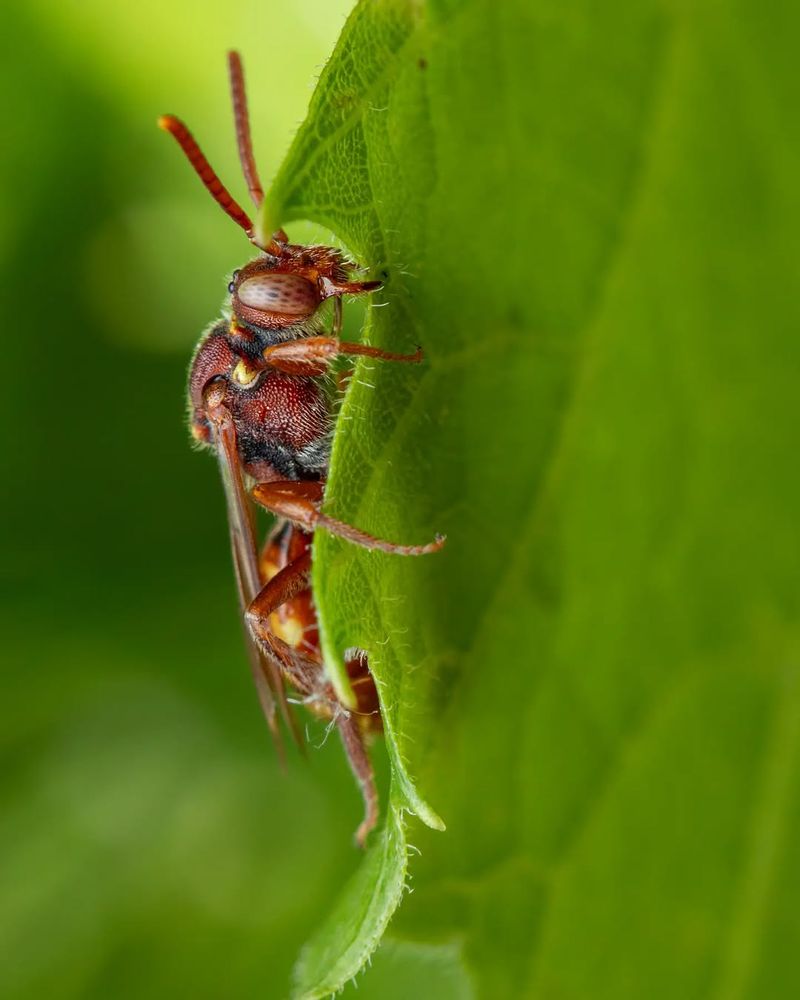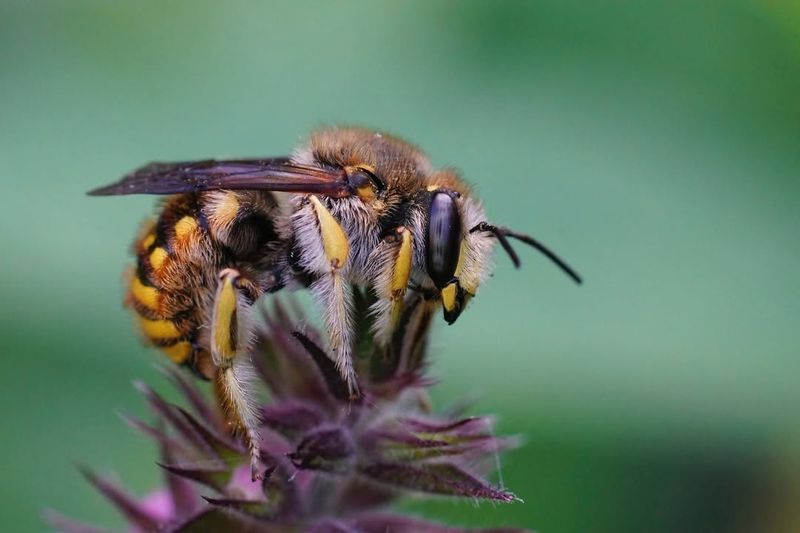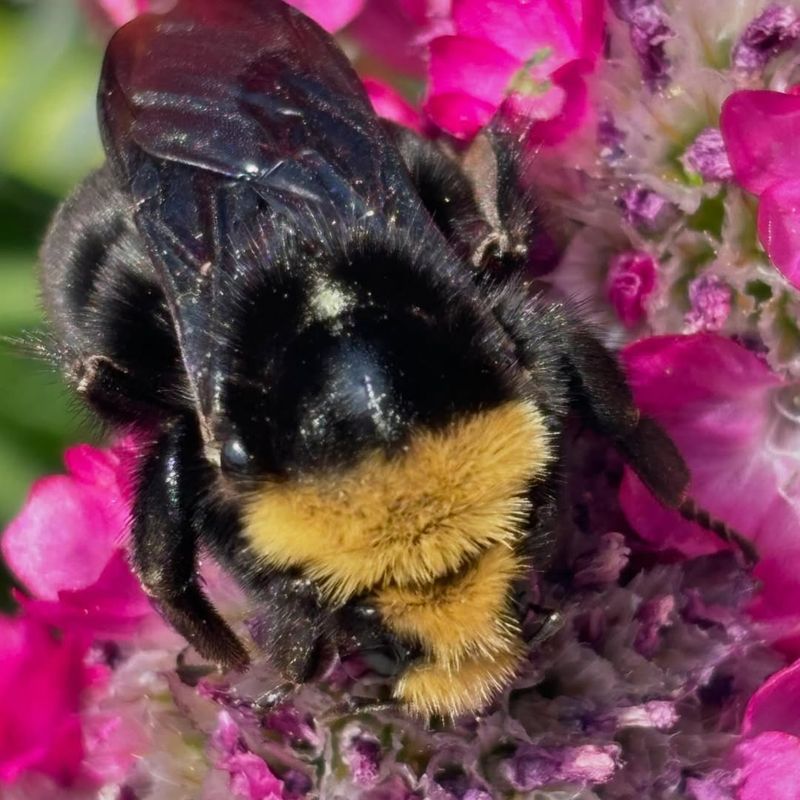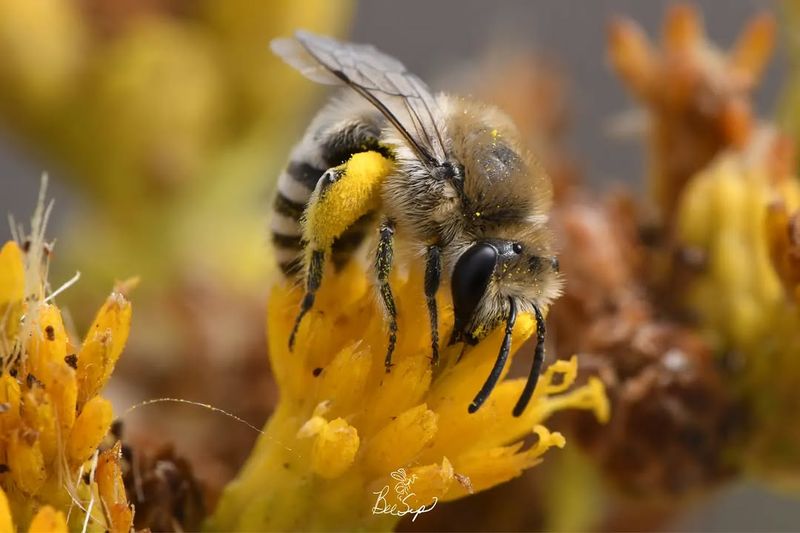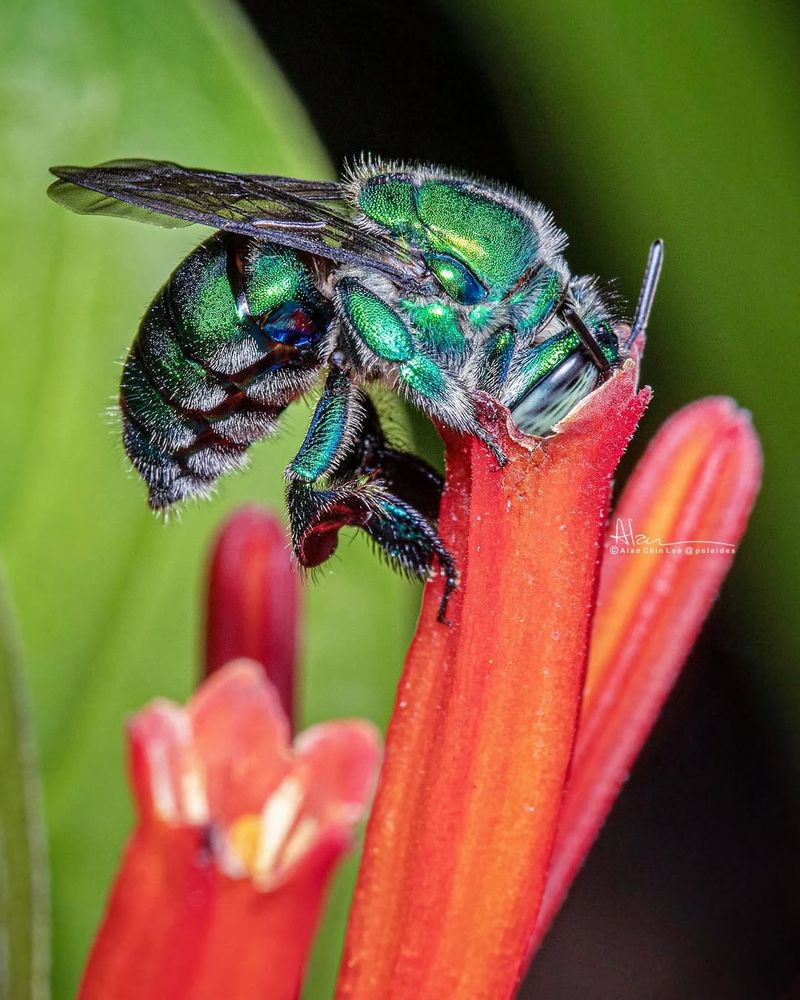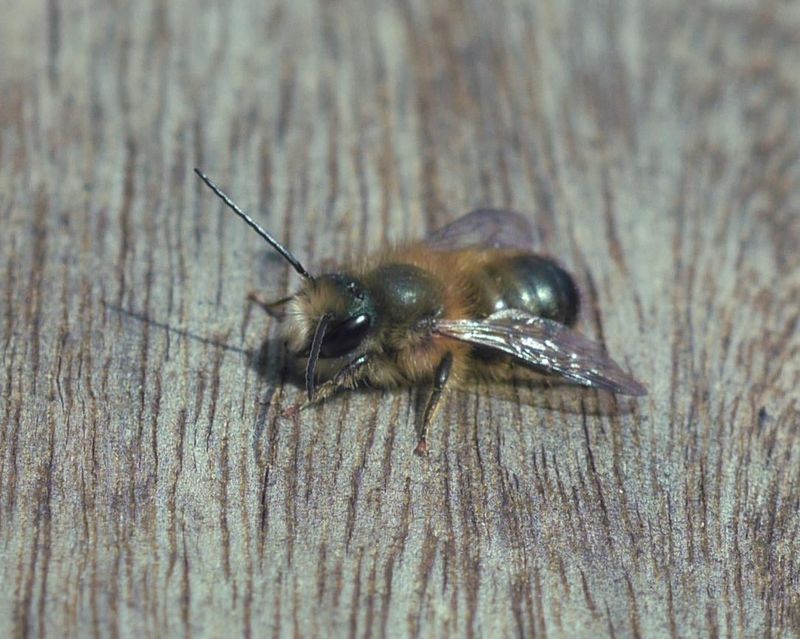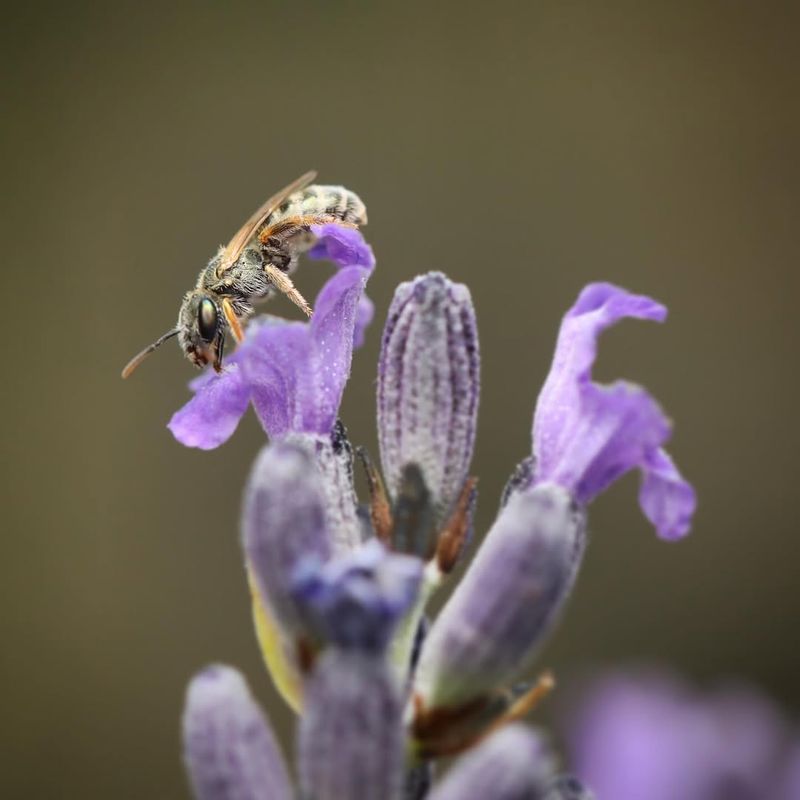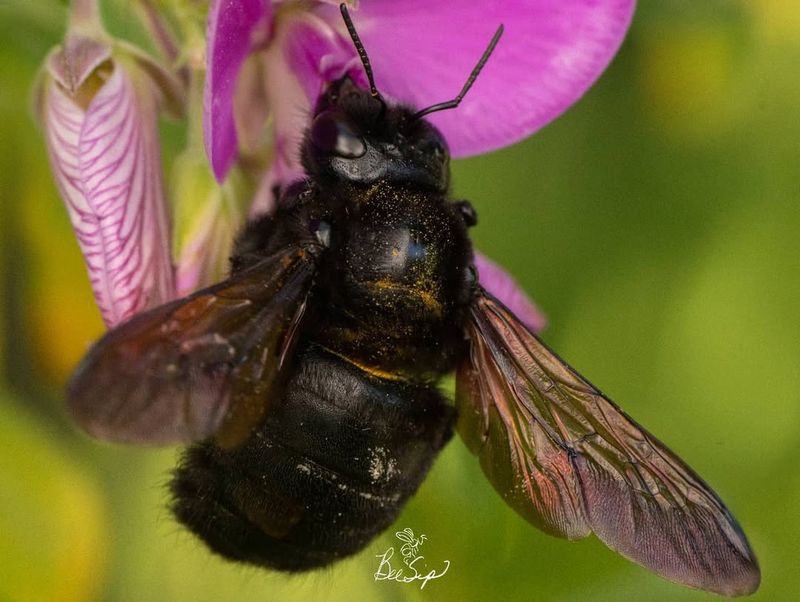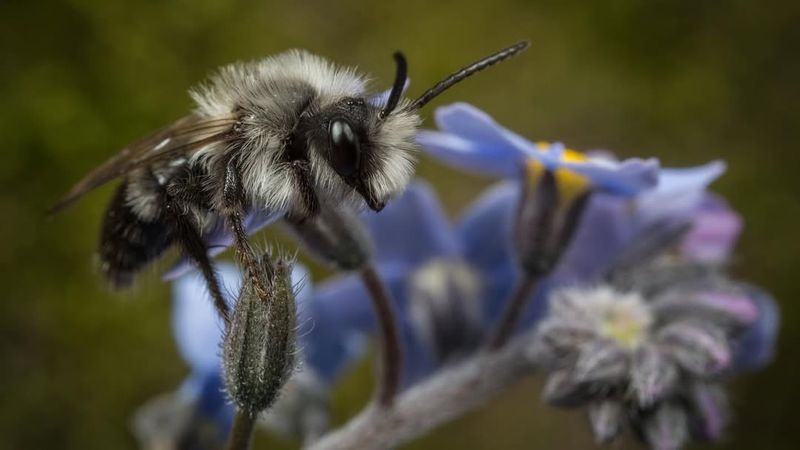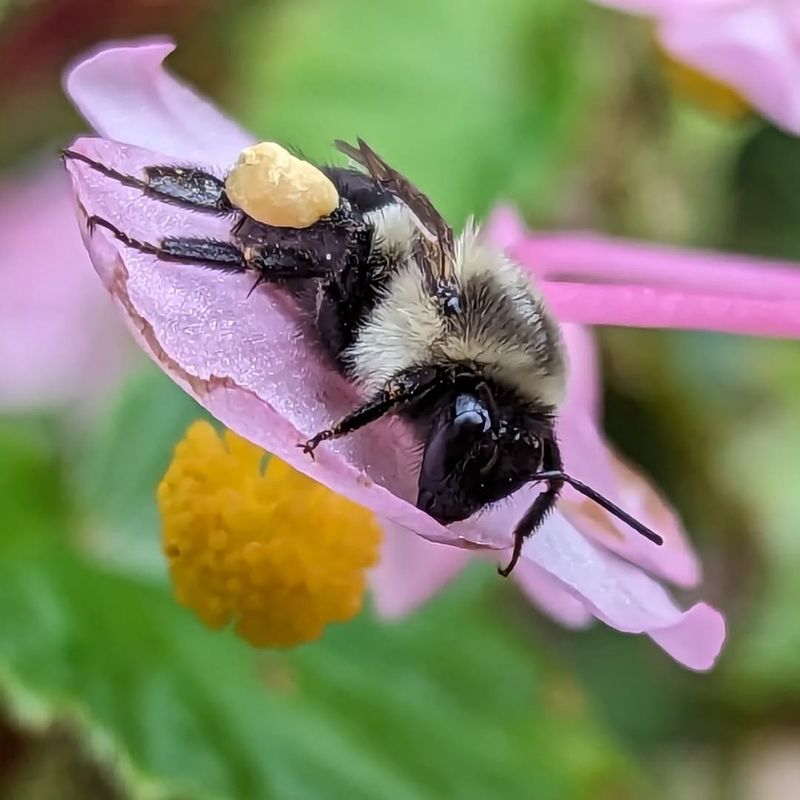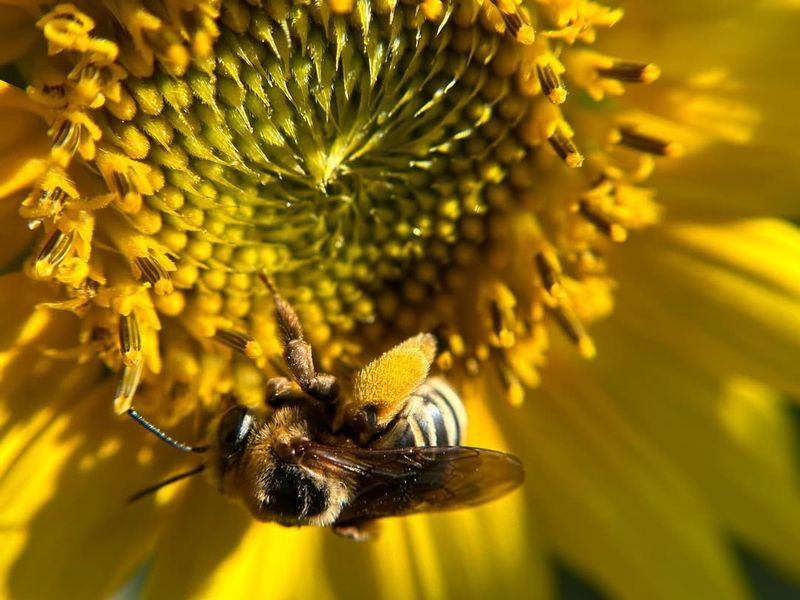A buzzing garden isn’t just about pretty flowers—it’s about the pollinators that keep it thriving. With 20 must-have bees and 10 more that deserve a closer look, your yard can become a pollinator paradise. Each species brings something special, whether it’s the tireless mason bee, the fuzzy bumblebee, or the tiny metallic sweat bee.
By creating a bee-friendly space, you’ll boost biodiversity, improve pollination, and get a front-row seat to nature’s hardest workers in action. Ready to meet the 33 bees that belong in your garden? Let’s go!
1. Mason Bee
With their gentle nature, these bees are wonderful garden guests. The mason bee, known for its metallic blue sheen, is a solitary pollinator. They are highly effective in pollinating fruit trees and flowers. These bees don’t live in hives like honeybees.
Instead, they use mud to construct their nests in small cavities. They are non-aggressive, making them safe around children and pets. Encouraging mason bees into your garden can result in an abundant harvest of fruits and flowers.
2. Bumblebee
A garden favorite, these bees are known for their size and fuzziness. Bumblebees are excellent pollinators, especially for crops like tomatoes and peppers. Unlike solitary bees, they are social and live in small colonies.
These bees can adapt to various climates, making them widespread. Their gentle buzzing can often be heard as they move from flower to flower. Having bumblebees in your yard means better pollination and more fruits and vegetables.
3. Carpenter Bee
These bees might seem intimidating, but they are harmless. The carpenter bee, with its shiny black body, is often mistaken for a bumblebee. While they drill into wood to create nests, they don’t eat it. They are solitary and rarely sting.
Carpenter bees are efficient pollinators, particularly for open-faced flowers. Their presence in your garden can enhance the beauty of your blooms. Providing untreated wood or bee houses can attract these beneficial insects.
4. Leafcutter Bee
These bees have a unique nesting habit that sets them apart. Leafcutter bees cut neat circles from leaves to construct their nests. Unlike honeybees, they don’t form large colonies. They are solitary and gentle. Leafcutter bees are efficient pollinators for many garden vegetables and flowers.
Their activity may be noticed by the small circles on leaves but they cause no harm to plants. Encouraging them involves providing nesting blocks in sunny spots.
5. Honeybee
Famous for their honey production, these bees are vital pollinators. Honeybees live in well-organized colonies with a single queen. They are social and communicate using dances. Their pollination services are crucial for agricultural crops.
They prefer nectar-rich flowers and can be attracted by planting a diverse range of blooms. Having a hive nearby can greatly increase your garden’s productivity. Supporting honeybees helps ensure a healthy ecosystem.
6. Sweat Bee
Despite their name, these bees are not bothersome. Sweat bees are attracted to human perspiration for the moisture and salt. They are small, often metallic, and are important pollinators. They are solitary, with some species forming loose communities.
Sweat bees are essential for pollinating wildflowers and certain crops. Their presence in your garden indicates a healthy ecosystem. To attract them, plant a variety of flowers that bloom throughout the season.
7. Mining Bee
These bees are ground nesters with a fascinating way of life. Mining bees dig tunnels in sandy soils to lay their eggs. They are solitary and do not sting readily. Their pollination is crucial for wild plants and crops.
Having bare, sandy patches in your garden can encourage them. These bees are active in early spring, helping to pollinate early-blooming flowers. Their gentle nature makes them excellent garden allies.
8. Blueberry Bee
Highly specialized, these bees have a favorite plant. The blueberry bee is an expert pollinator of blueberries. They are solitary and active early in the spring. Their emergence coincides with the bloom of blueberry plants.
These bees are gentle and rarely sting. Encouraging them involves planting blueberry bushes. By doing so, you’ll likely enjoy a larger harvest. Their contribution to fruit production makes them valuable garden visitors.
9. Orchard Bee
These bees are perfect for fruit tree enthusiasts. Orchard bees emerge in early spring, ready to pollinate fruit blossoms. They are solitary but can live in groups if nesting sites are available. Their pollination efficiency surpasses that of honeybees in apple orchards.
Providing nesting boxes can help attract them to your garden. Enjoy the benefits of a bountiful fruit harvest with these industrious pollinators. Their presence ensures healthy, well-pollinated trees.
10. Squash Bee
These bees have a special relationship with a particular vegetable. Squash bees specialize in pollinating squash plants. They are solitary and nest underground. Their activity peaks in the morning when squash flowers bloom. Unlike honeybees, squash bees solely focus on squash plants, making them efficient pollinators.
Encouraging them involves planting squash and leaving bare soil patches. These bees can significantly increase your squash yield. Their dedication makes them indispensable for gardeners who grow squash.
11. Long-Horned Bee
With their long antennae, these bees are hard to miss. Long-horned bees are solitary ground nesters. They are active during the summer months, visiting a variety of flowers. These bees are excellent pollinators for several summer-blooming plants.
They have a non-aggressive nature, making them safe companions in the garden. To attract them, plant sunflowers and other composite flowers. Their presence ensures vibrant summer blooms. Enjoy the beauty and productivity they bring to your garden.
12. Resin Bee
These bees have a sticky secret. Resin bees use plant resins to build their nests. They are solitary and nest in pre-existing holes. Resin bees are good pollinators for garden flowers. Their nests can be encouraged by providing bee hotels or drilled wood blocks.
These bees are gentle and pose no threat to humans. Their activity supports a diverse range of plants. Attracting resin bees can enhance the health and beauty of your garden flora.
13. Wool Carder Bee
Fascinated by fuzzy textures, these bees collect wool. Wool carder bees gather fibers from hairy plants to line their nests. They are solitary and prefer sunny, sheltered locations. These bees are effective pollinators for many flowers.
To attract them, plant lamb’s ear or other hairy-leaved plants. Their presence adds a unique aspect to your garden’s ecosystem. Enjoy watching them as they work, adding to the vibrancy and health of your blooms.
14. Cuckoo Bee
Known for their cunning strategy, these bees are brood parasites. Cuckoo bees lay their eggs in the nests of other bees. They do not collect pollen or nectar but rely on their host. Despite this, they play a role in the ecosystem.
Cuckoo bees often mimic their host’s appearance. While they don’t contribute directly to pollination, they help maintain balance in bee populations. Observing them can provide insight into the complex world of bees.
15. Small Carpenter Bee
Unlike their larger counterparts, these bees are petite. Small carpenter bees nest in plant stems rather than wood. They are solitary and rarely sting. These bees are efficient pollinators for a variety of flowers. Providing hollow stems or bee hotels can encourage them.
Their presence in your garden supports pollination and plant diversity. Enjoy the subtle beauty and hard work of these unassuming pollinators. Their activity contributes to the flourishing of garden plants.
16. Melipona Bee
Hailing from tropical regions, these stingless bees are fascinating. Melipona bees are known for their role in pollinating rainforest plants. They live in colonies and produce a unique honey. Though not common in temperate gardens, they are valuable in their native habitats.
Their gentle nature makes them attractive for beekeeping. In tropical gardens, providing a diverse range of plants can support them. Discover the benefits of these tiny pollinators in maintaining healthy ecosystems.
17. Tawny Mining Bee
These bees are springtime specialists. The tawny mining bee’s vibrant orange fur makes it stand out. They are solitary and nest in lawns or bare soils. These bees are excellent early-season pollinators. Their activity coincides with the bloom of many spring flowers.
Attracting them involves maintaining areas of bare soil. Enjoy the lively presence they bring to your garden. Their contribution to pollination is appreciated by wildflowers and fruit trees alike.
18. Nomad Bee
Deceptively wasp-like, these bees have a unique lifestyle. Nomad bees are brood parasites, laying eggs in other bees’ nests. They resemble wasps, with slender bodies and long antennae. While they don’t gather pollen, they contribute to the ecosystem by controlling host populations.
Observing these bees can offer insights into the diversity of bee behavior. Their presence indicates a balanced garden ecosystem. Enjoy the intrigue they add to your garden’s bee community.
19. Carder Bee
These bees are known for their meticulous gathering habits. Carder bees collect pollen and nectar from a variety of flowers. They are solitary and prefer sunny locations. Their efficient pollination supports many garden plants. To attract them, plant a diverse range of flowers.
Carder bees are gentle and can be observed up close. Their activity ensures a healthy, productive garden. Enjoy the benefits they bring, enhancing both beauty and biodiversity in your yard.
20. Yellow-Faced Bee
With their striking appearance, these bees are easy to spot. Yellow-faced bees have distinctive facial markings. They are solitary and nest in hollow stems or twigs. These bees are effective pollinators for a range of plants. Providing nesting materials like hollow canes can attract them.
Their gentle nature makes them pleasant garden companions. Enjoy the diversity they bring to your garden’s bee population. Their presence supports healthy plant growth and diversity.
21. Plasterer Bee
These bees are skilled architects. Plasterer bees line their nest cells with a waterproof secretion. They are solitary and nest in the ground. These bees are active pollinators for many garden plants. Encouraging them involves providing open, sandy soil patches.
Their activity is crucial for pollinating spring and summer blooms. Enjoy watching them as they work diligently in your garden. Their presence indicates a thriving, balanced ecosystem.
22. Masked Bee
With their unique facial markings, these bees are unmistakable. Masked bees are solitary and nest in hollow stems. They are efficient pollinators for a variety of flowers. Providing nesting materials like bamboo canes or bee hotels can attract them. These bees are gentle and rarely sting.
Their presence supports a diverse range of plants. Enjoy the subtle beauty they add to your garden. Their diligent pollination ensures vibrant, healthy blooms.
23. Green Orchid Bee
Exotic in appearance, these bees are garden jewels. Green orchid bees are metallic and vibrant. They are solitary and found in tropical regions. These bees are crucial for pollinating orchids. Attracting them involves planting diverse tropical flowers.
Though not common in temperate gardens, they are valuable where they occur. Enjoy the stunning beauty and important role they play. Their presence signifies a healthy, flourishing ecosystem.
24. Red Mason Bee
These bees are important early-season pollinators. The red mason bee is known for its rust-colored body. They are solitary but can nest in groups if sites are available. Their efficiency in pollinating fruit trees surpasses that of honeybees.
Providing nesting materials like drilled blocks of wood can attract them. Enjoy a fruitful harvest with their help. Their presence ensures well-pollinated, healthy fruit trees.
25. Cactus Bee
Adapted to arid climates, these bees are specialists. Cactus bees are crucial for pollinating cacti. They are solitary and nest in the ground. Their activity coincides with the bloom of cactus flowers. Attracting them involves planting cacti and maintaining sandy soils.
Though not common in temperate gardens, they are valuable in desert regions. Enjoy the unique role they play in sustaining desert ecosystems. Their presence indicates a thriving desert garden.
26. Large Carpenter Bee
The gentle giants of the bee world. Large carpenter bees resemble bumblebees but have shiny abdomens. They nest in wood but don’t consume it. Their pollination supports a variety of plants. Providing untreated wood can attract them.
While their drilling can be concerning, they are non-destructive. Enjoy the benefits they bring to your garden’s plant diversity. Their presence supports healthy, vibrant blooms.
27. Teddy Bear Bee
With their endearing name, these bees are garden favorites. Teddy bear bees are solitary and known for their fluffy appearance. They are effective pollinators for a variety of flowers. Their activity supports a diverse range of garden plants.
Providing nesting materials and a variety of flowers can attract them. Enjoy the charm and productivity they bring to your garden. Their presence ensures a lively, flourishing ecosystem.
28. Ashy Mining Bee
A bees that are early risers in the pollinator world. Ashy mining bees are active in early spring. Their distinctive grey and black stripes make them easy to identify. They are solitary and nest in the ground. Providing sandy soil patches can attract them.
Their pollination is crucial for early-blooming plants. Enjoy the lively activity they bring to your garden. Their presence supports healthy spring blooms and fruit trees.
29. Hairy-Footed Flower Bee
Known for their unique appearance, these bees are springtime visitors. Hairy-footed flower bees have long, hairy legs. They are solitary and prefer tubular flowers. These bees are excellent pollinators for many spring blooms.
Providing a variety of flowers can attract them to your garden. Enjoy the fascinating behavior they exhibit as they buzz from flower to flower. Their presence ensures vibrant, well-pollinated spring gardens.
30. Sunflower Bee
These bees have a sunny disposition. Sunflower bees are specialists in pollinating sunflowers. They are solitary and nest in the ground. Their activity peaks during sunflower blooming season.
Providing sunflowers can encourage them to visit your garden. Enjoy the beauty and pollination services they offer. Their presence ensures a bountiful sunflower harvest. These bees are invaluable for gardeners who love sunflowers.

